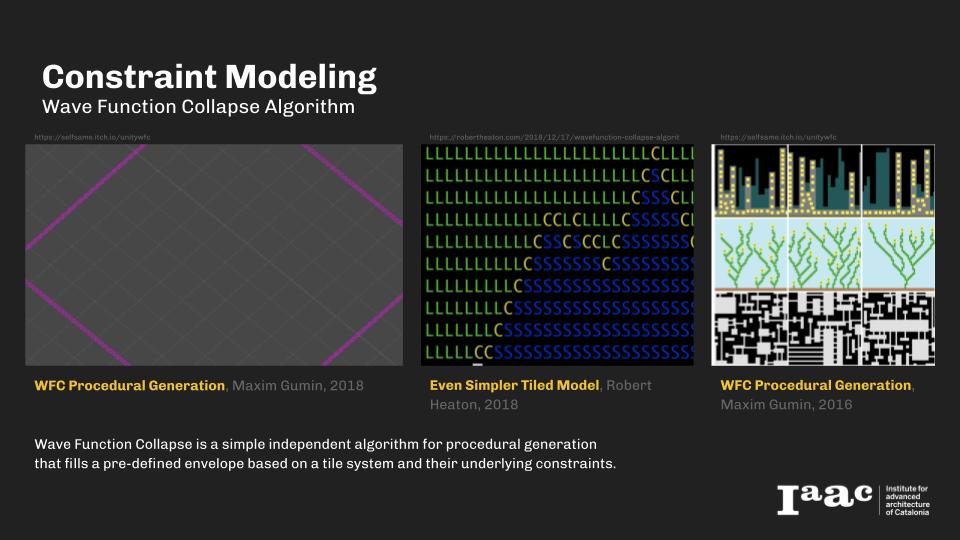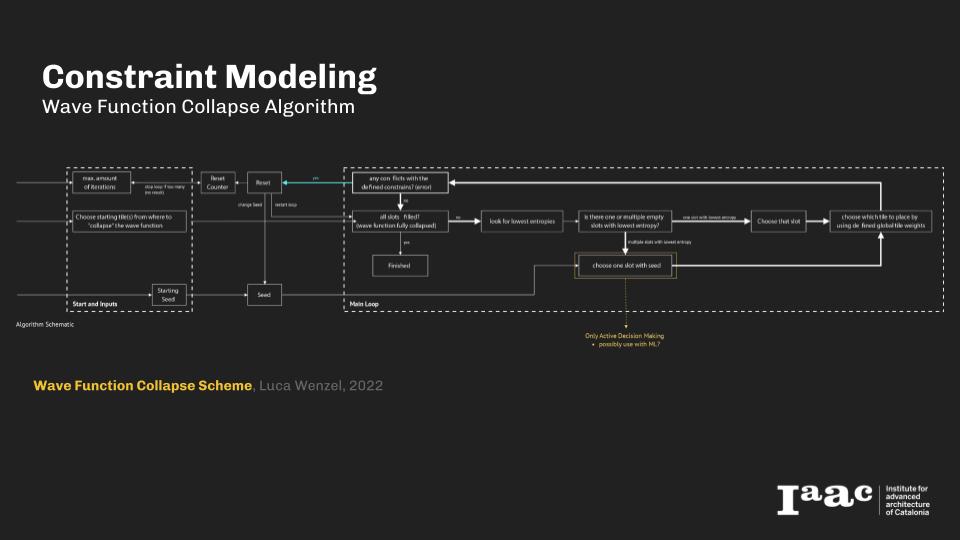Digitally generated cities are not just relevant for urban research, they are becoming increasingly important for digital spaces in the metaverse, video games, movies and TV shows
Two significant factors in the creation of these models are speed and variation, as they guarantee a desired and economically viable outcome. A fast workflow overcoming time consuming hand crafting and existing procedural methods, could have a big impact in the creation of urban digital spaces.
In order to reach this goal, fast and relatable city layouts are required. Constraint Modeling can be used to – almost instantly – define large amounts of city iterations, given a specific envelope. With the help of Evolutionary Algorithms, different goals of the scenarios can be balanced.

Either handcrafted and time consuming models or procedurally designed processes that aren’t very relatable and too analytical.
? How to create relatable and fast procedural city models?
- Using different topology envelopes, driven by city analogies
- Using Constraint Modeling to quickly populate these envelopes with different iterations
- Using Evolutionary Algorithms to compare and optimize results



